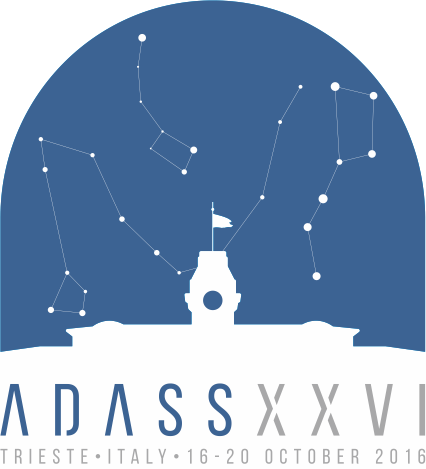Maris Michele
Contact

- Position:
- INAF – Osservatorio Astronomico di Trieste, Trieste, Italy
- Address
- Italy
Miscellaneous Information
- Miscellaneous Information
-
Abstract Reference: 30723
Identifier: P6.17
Presentation: Poster presentation
Key Theme: 6 Python in Astronomy
Modelling of Zodiacal Light Emission for Space MissionsAuthors:
Maris Michele, Scaramella Roberto, Burigana Carlo, Romelli Erik, Amiaux Jerome, Carvalho Sofia C., Cuillandre Jean-Charles, De Rosa Adriano, Dinis João, Hudelot Patrick, Tereno Ismael, Trombetti TizianaAccurate planning of forthcoming missions requires an accurate knowledge of diffuse sources in order to optimize mission parameters and the scanning strategy to meet the expected performances. Zodiacal Light (ZL or Zody) is a well known contaminant for ground based and space-borne observations in the optical and infrared bands, and recent results from the Planck collaboration highlight its importance for high sensitivity observations in the millimeter domain.The physics of ZL is well known. ZL is dominated by scattering of Sun light from interplanetary dust for wavelenghts shorter than 12 micron, while thermal emission dominates at larger wavelengths. However predicting and modelling of Zody is complicated by a number of subtleties. The cloud of interplanetary dust particles has a quite complex 3D structure. Its main geometrical parameters have been assessed in the last two decades, but the photometrical properties of ZL are affected by a significant level of uncertainty. At optical wavelengths, measures of ZL contamination are affected by light from background stars. In sub-mm the worst uncertainty is the model of dust grains emissivity. In addition it must be taken in account that the observer is moving within the cloud of interplanetary dust particles, leading to an important time dependence in the perturbing signal and asking for a precise knowledge of the expected trajectory and scanning strategy of the mission. In this talk I will discuss how to build a reliable predictor for Zodiacal Light contamination. I will present pyZod, a PYTHON code which implement such model. The Planck, Euclid, Core+ missions are discussed as use cases.



